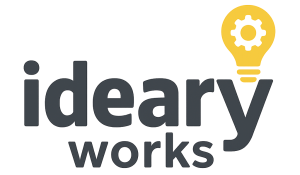Overlay tools promise one-click accessibility, yet numerous studies show they often worsen the experience for people with disabilities. A recent ACM study revealed that most blind participants found overlays unhelpful, in some cases introducing new barriers that blocked essential functionality ACM Digital Library. Overlay vendors rely heavily on automated scans that produce false positives and negatives, flagging non-issues or overlooking critical barriers accessiblu.com. Genuine accessibility demands foundational code improvements, not superficial layers.
The Hype Behind One-Click Solutions
Overlay plugins appeal to organizations seeking quick fixes. They typically inject JavaScript that modifies content presentation, adds toolbar controls, and attempts to adjust colors or enlarge text on demand. Marketing messages claim instant compliance with WCAG guidelines, yet they rarely disclose that overlays cannot modify underlying HTML semantics or provide accurate keyboard navigation. By wrapping an inaccessible site in a veneer of accessibility features, overlays create a false sense of security that hides broken experiences from sighted stakeholders but leaves assistive technology users stuck.
Technical Limitations and False Assurances
Because overlays rely on automated engines, they cannot interpret context or user intent. They may label every decorative icon as missing alt text or misidentify non-interactive elements as requiring ARIA roles. Such false positives erode developer trust and lead teams to ignore flagged issues. Conversely, overlays often miss complex problems like unstructured form controls, missing ARIA attributes in custom widgets, or focus-order disruptions. Studies confirm that these gaps persist after overlay activation, forcing users to endure barriers that go uncorrected junekarlove.com.
Negative Impact on User Experience
Blind users frequently report that overlays interfere with their screen readers by creating extra layers of markup that confuse navigation. Audio feedback becomes garbled as overlays change element order or inject hidden containers. Keyboard-only visitors find that overlay toolbars trap focus, preventing access to underlying content. Rather than enhancing usability, overlays can multiply frustrations and deepen accessibility debt, requiring additional work to untangle their side effects.
Legal and Reputational Risks
Reliance on overlays can backfire in legal contexts. Courts under the ADA have indicated that patchwork fixes do not satisfy effective access requirements. When an overlay masks but does not remove barriers, organizations remain vulnerable to lawsuits and regulatory scrutiny. Public outrage can also follow when accessibility gimmicks are exposed, damaging brand reputation and trust among disabled communities who quickly recognize inauthentic efforts.
Real Solutions for Lasting Accessibility
True accessibility begins with auditing your site’s code and content. Identify barriers through automated and manual testing, then remediate issues at the source. Use semantic HTML for headings, lists, and controls. Ensure all interactive components are operable via keyboard and convey state changes through ARIA attributes. Address color contrast in your CSS, not through overlay filters. Embed captions and transcripts directly in your media markup. By integrating accessibility into your development and content workflows, you create durable solutions that remain intact through updates and redesigns.
Conclusion
While accessibility overlay tools promise quick wins, their superficial approach fails to deliver real inclusion and often introduces fresh obstacles. Genuine accessibility requires investing in foundational code improvements, rigorous testing with assistive technologies, and a culture of continuous remediation. Only then can you provide equitable experiences that meet legal standards and earn the trust of every visitor.



